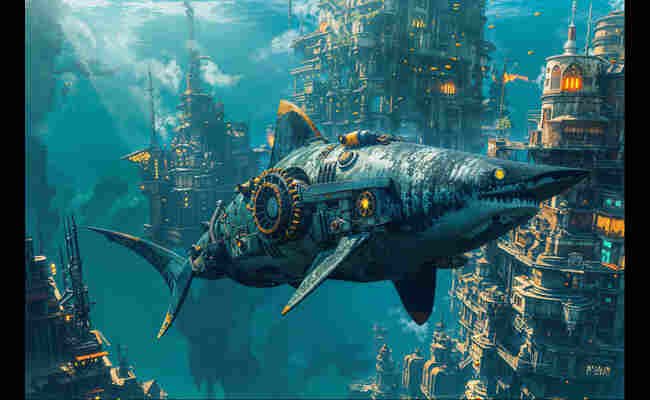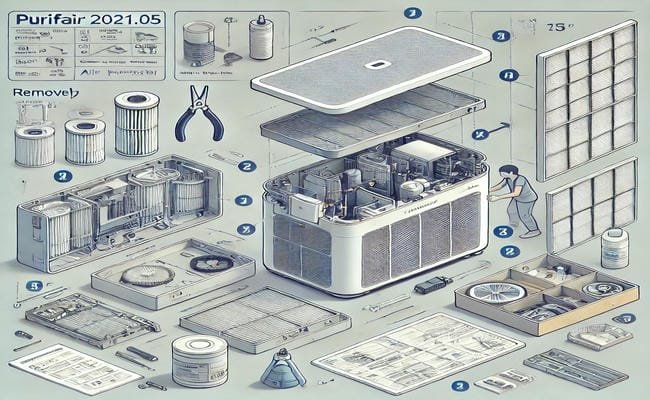
A Prescription for Privacy: Enhancing Data Security in Medical Facilities
May 8, 2024
Maximizing Your Garage Space: What to Store and How
May 8, 2024The ambition to construct beneath the waves has been a hallmark of human ingenuity, symbolizing our unyielding desire to overcome the natural boundaries set by our planet’s vast oceans.
Subaquatic structures, ranging from underwater tunnels that connect distant lands to artificial reefs designed to foster marine life, represent some of the most challenging and innovative feats of engineering.
These marvels not only facilitate transportation and exploration but also contribute to environmental conservation, making them invaluable assets in our quest to harmonize with the world around us.
Subaquatic Structures: Engineering Marvels Below Sea Level

Tunneling Through the Depths
Perhaps the most direct interaction with the ocean’s unseen landscapes is through the tunnels that burrow beneath seabed, connecting continents, countries, and cities in ways that were once deemed impossible.
The engineering behind these tunnels is as complex as it is fascinating, involving cutting-edge construction techniques and materials designed to withstand the immense pressure of transducers and corrosive environments found below sea level.
Bridging the Waters
While tunnels allow us to traverse beneath the sea, bridges enable us to skim its surface, connecting islands and coastlines with spans that defy the waves below. These structures must be resilient against the relentless forces of nature, including storms, currents, and saltwater corrosion, requiring engineers to push the limits of design and material science.
The Akashi Kaikyō Bridge
The Akashi Kaikyō Bridge in Japan, the longest suspension bridge in the world, stretches an impressive 1,991 meters (6,532 feet) between its main towers. Its construction involved the development of specialized technologies, such as pendulum motion control systems to counteract seismic activity and typhoon-strength winds. This bridge not only illustrates the potential of modern engineering but also serves as a vital link for people and economies.
Artificial Reefs: Fostering Marine Life
Beyond facilitating human transportation, subaquatic engineering also encompasses efforts to protect and enhance the marine environment. Artificial reefs are a prime example, created from purpose-sunk structures like ships, concrete blocks, or custom-made reef units. These reefs provide habitats for marine organisms, helping to increase biodiversity and replenish fish stocks, which have been depleted due to overfishing and habitat destruction.
The Great Carrier Reef
An intriguing instance of an artificial reef is the “Great Carrier Reef,” formed by the sinking of the decommissioned aircraft carrier USS Oriskany in the Gulf of Mexico. This 888-foot behemoth has transformed into a thriving marine ecosystem, attracting divers and marine biologists keen to explore its impact on local biodiversity.
Underwater Habitats and Laboratories
The quest to understand the mysteries of the deep has led to the development of underwater habitats and laboratories, where scientists can live and work for extended periods. These facilities allow for continuous observation and study of marine life, offering insights into the ocean’s complex ecosystems and how they are being affected by climate change.
Exploring Renewable Energy Sources Beneath the Waves
Beyond the marvels of connectivity and marine conservation, subaquatic structures are also pivotal in the exploration and harnessing of renewable energy sources.
Tidal and wave energy projects exemplify how we can tap into the endless motion of the seas to generate power. These installations, often located on or below the seabed, convert the kinetic energy of water into electricity, offering a sustainable alternative to fossil fuels.
Like bridges that connect shores and tunnels that penetrate the depths, these energy projects reflect our growing capability to adapt and thrive within the marine environment, further underscoring the relationship between human ingenuity and the quest for sustainability.
Aquarius Reef Base
The Aquarius Reef Base, located off the coast of Florida, is the world’s only undersea research station. It provides aquanauts and researchers with a unique opportunity to conduct experiments and monitor marine life up close, contributing valuable data to our understanding of coral reefs, ocean acidification, and underwater physiology.
The Future of Subaquatic Engineering
The future of subaquatic structures is as boundless as the ocean itself. Emerging technologies, such as 3D printing with sustainable materials and the development of autonomous underwater vehicles, promise to revolutionize the way we build and explore below sea level.
Furthermore, as our awareness of the ocean’s critical role in Earth’s ecological balance grows, so too does our commitment to developing structures that not only withstand the marine environment but also contribute to its health and vitality.
Conclusion
Subaquatic structures represent some of the most daring and innovative accomplishments in the field of engineering.
From tunnels that pierce the ocean floor to bridges that span its breadth, and from artificial reefs that teem with life to habitats that allow us to live within it, these marvels showcase the extraordinary lengths to which humanity will go to conquer the unknown, connect across divides, and protect our planet’s most precious resource.
As we continue to push the boundaries of what’s possible below sea level, we pave the way for a future where our relationship with the ocean is defined not by conquest but by coexistence and mutual respect.



